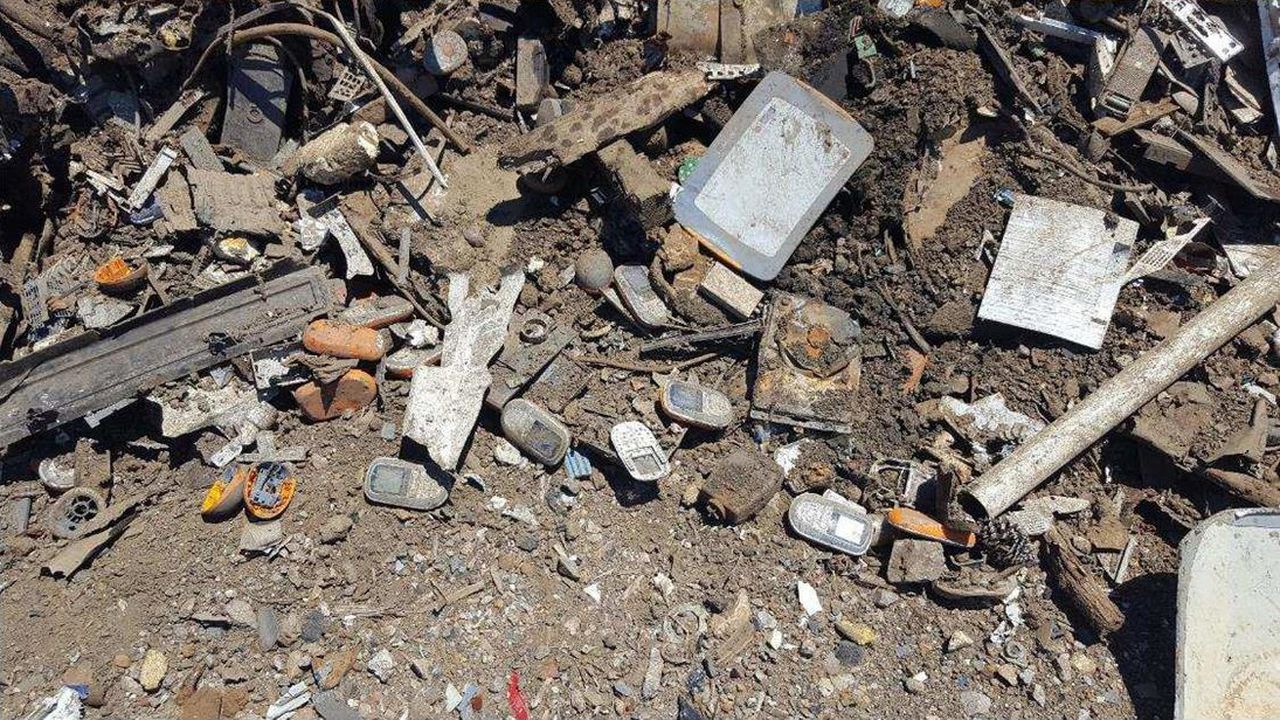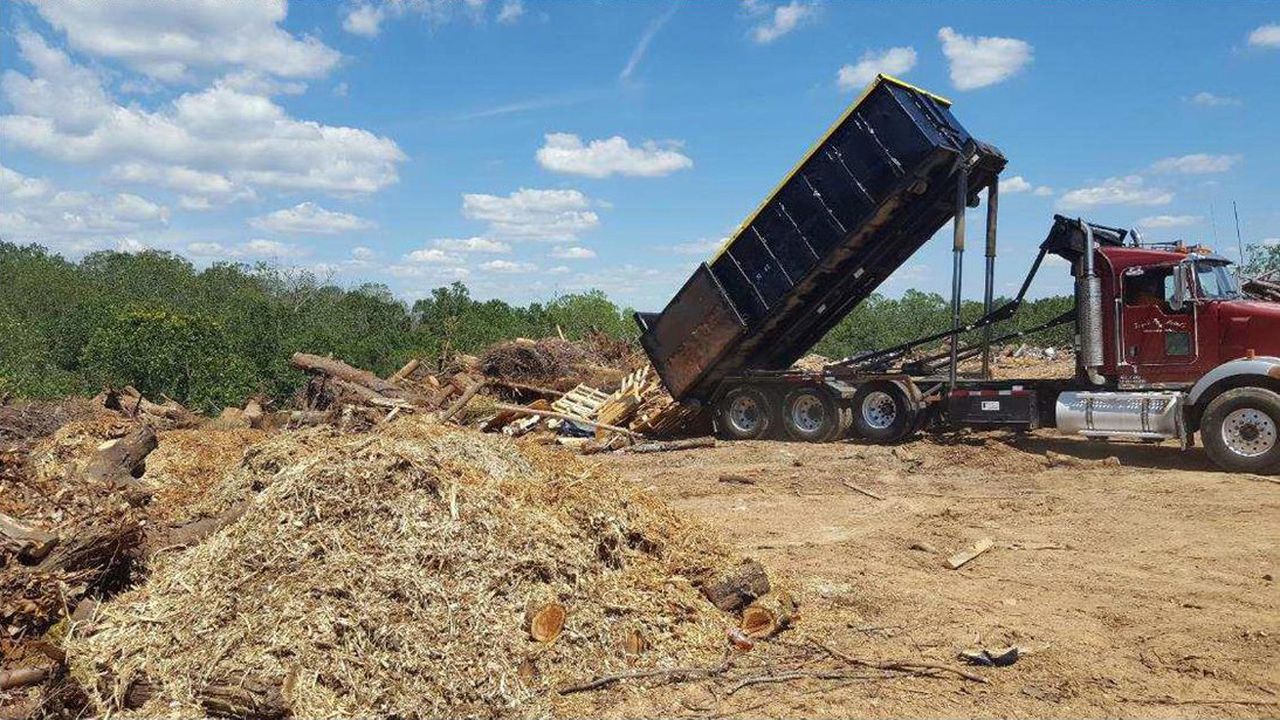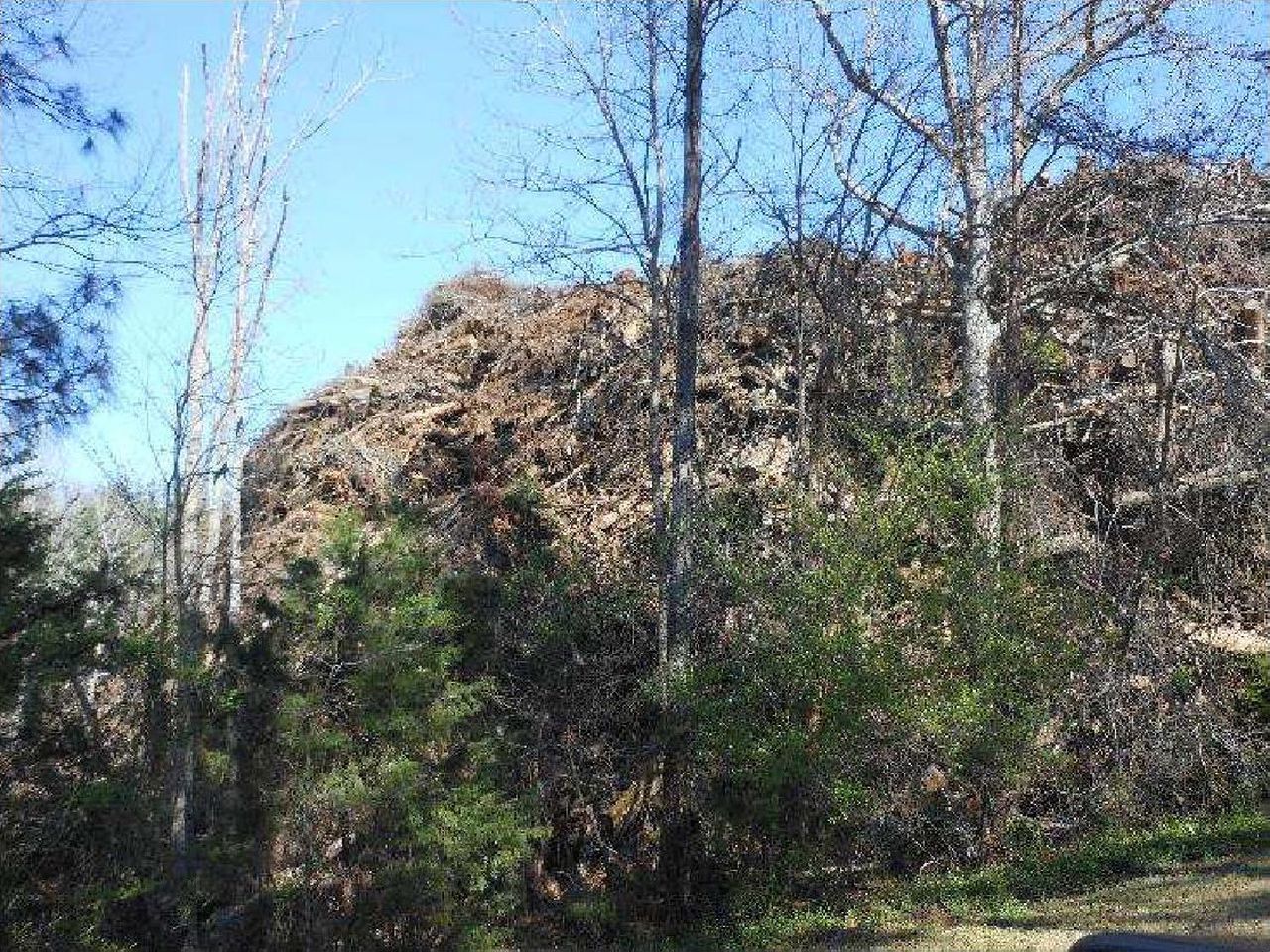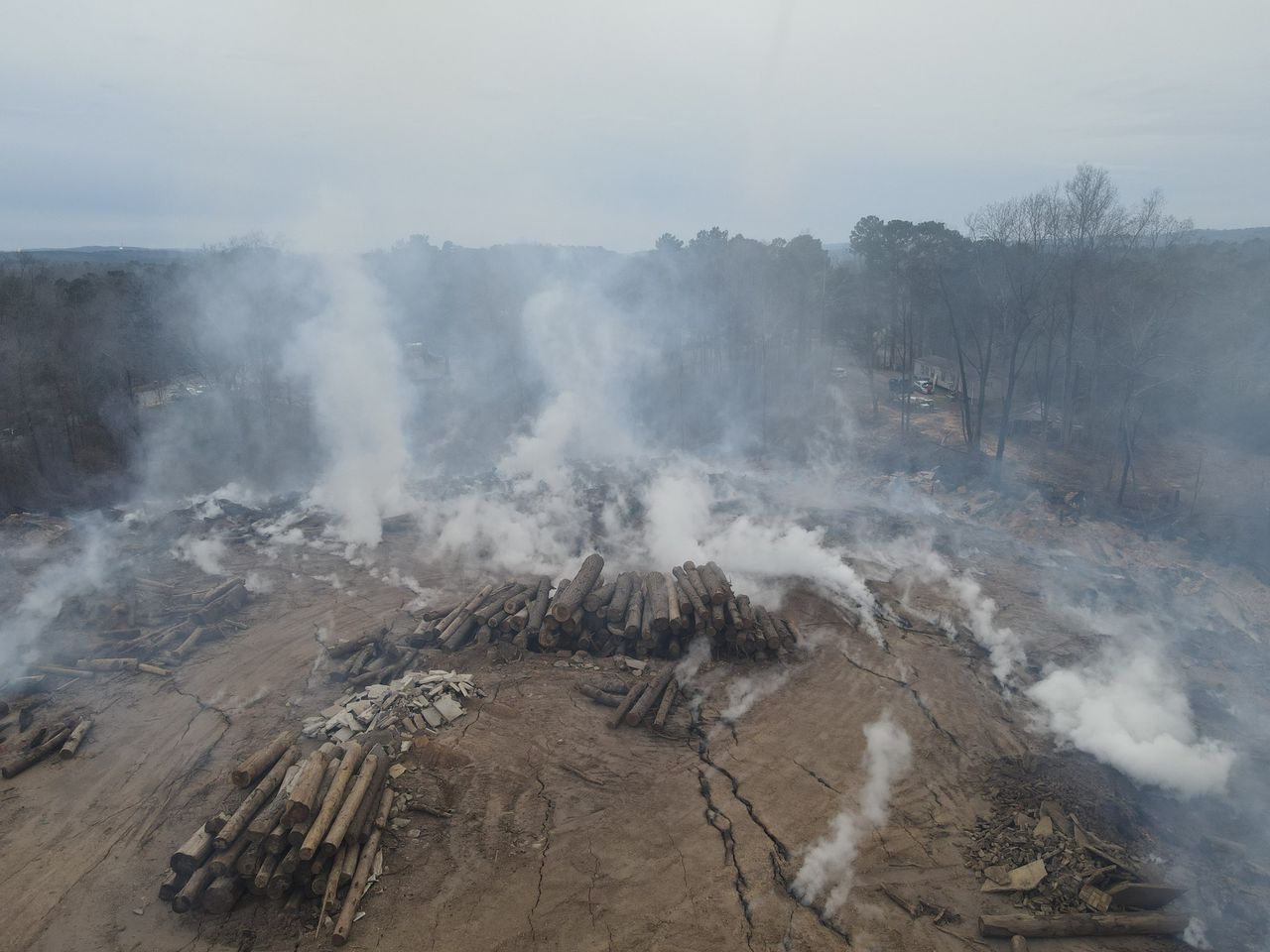How Alabama ignored warning signs at the Moody landfill before fire
A landfill fire is still burning underground after more than three months, about 15 miles from Birmingham.
There’s a lot less smoke now, but for months the grey plumes blanketed nearby residents with hazardous amounts of smoke, driving some from their homes, giving rise to claims of health problems and property damage in the cities of Moody and Trussville.
The U.S. Environmental Protection Agency took over on Jan. 18 and brought in 2,599 truckloads of dirt to smother the blaze. The agency says it is still finding isolated plumes of smoke that escape from the pile, but their work is nearing completion. The EPA is now spreading grass seed to create a permanent cover over the fire site.
But before the EPA arrived, the landfill burned for nearly two months as state, local and federal officials debated who had the authority and responsibility to do something about the fire.
State officials spent all of December and most of January trying to figure out how to put out the fire and how to tamp down the growing anger from nearby residents over the mess.
It was, as one official put it: a failure.
“Government failed those people that live in that area of keeping them safe,” said Sen. Lance Bell, R – Pell City, who represents the area around the fire.
Bell was elected to his seat in November, just weeks before the fire started and spent most of his first weeks in office trying to get someone – the Alabama Department of Environmental Management, the Alabama Legislature, Gov. Kay Ivey, the EPA – to do something.
A fire at an environmental landfill near Birmingham, Ala. began on Nov. 25, local fire fighters say. (Photos courtesy Moody Fire Department)Moody Fire Department
For weeks, state agencies and local governments debated who should be in charge.
The state last month gathered some of those government and emergency response agencies to examine the state’s response to the fire. The group is asked to look into whether more regulations or law changes are needed to allow the state to better respond to any future incident like this.
“We’ve got to look from a regulatory standpoint, the legislature, on how we look at our laws, do we need to do something different?” Bell said. “Do we need to tweak some laws? Because this is an unregulated landfill that’s operated for many years.”
Here are a few places they could start:
Alabama failed to regulate the landfill before the fire
The Environmental Landfill, Inc. was facing problems long before it caught on fire.
ELI was a green waste landfill, supposed to take in natural materials like trees, limbs, brush and the like.
However, since 2013, the Alabama Department of Environmental Management received seven complaints of illegal dumping at the site, and ADEM inspectors found violations on at least six different occasions.
RELATED CONTENT: See the full timeline of all inspections of Environmental Landfill, Inc.
Those violations included numerous instances of finding scrap tires at the site, as well as construction/demolition waste, household waste, electronics, appliances, auto parts, junked vehicles, and petroleum-stained soil.

Alabama regulators reported finding electronics, auto parts, scrap tires and more during a July 31, 2017 inspection of the Environmental Landfill, Inc. near Moody Ala.Alabama Department of Environmental Management
ADEM inspectors noted on eight separate occasions that the site represented a fire hazard.
Yet, nothing was done to address the fire hazard.
ADEM records show no fines or penalties assessed to the owners or operators of the landfill. After receiving the violation notices, they sent receipts to ADEM to show that unauthorized waste had been hauled off to a landfill that was authorized to handle the material. Once the owners hauled away more than 12 tons of unauthorized waste.
The cycle repeated itself at least three times. ADEM would receive a complaint and inspect the site. ADEM would find illegally dumped materials. The operators would say they’d removed the materials, and ADEM would close the complaint.
In 2013, the landfill operators told ADEM that they put in a security camera to deter illegal dumping.
But during a 2018 inspection, ADEM found that the operators had attempted to hide unauthorized waste under tree cuttings.
From 2019 to 2021 the landfill removed at least 50 tons of material from the site in response to ADEM’s notice of violations.
On Aug. 10, 2022 – the last time the site was inspected before the fire – ADEM found “very little” unauthorized waste, but the operator told the inspector that there was still improper material buried in the landfill. He said he planned to remove it over the next 18 months.
No available public records show whether that process started before the fire. The owners and operators of the landfill declined requests to comment.
Yet ADEM Director Lance LeFleur LeFleur told AL.com after the blaze started that ADEM had “no reason to believe” there was unauthorized waste at the site.

A truck unloads improper construction waste during an inspection by the Alabama Department of Environmental Management on July 31, 2017.Alabama Department of Environmental Management
Progress reports from ADEM employees and EPA personnel on efforts to smother the fire both note finding solid waste and scrap tires at the site. The EPA has identified roughly two truckloads of improper waste that has been pulled aside and will be hauled to a different landfill.
ADEM says it can’t regulate green landfills
Could ADEM have done more to address the situation before the blaze?
LeFleur, the agency director, says no.
In the press conference announcing the working group, LeFleur said ADEM was “specifically prevented from regulating vegetative waste,” by state law.
Not everyone agrees with that interpretation.
Environmental attorney David Ludder, who previously worked at ADEM as its general counsel, said he believes that ADEM has both the ability and duty to regulate landfills like the one in question.
“In my opinion, the department has sufficient statutory authority today to have regulated the Environmental Landfill site as well as other green waste disposal sites,” Ludder told the Alabama Environmental Management Commission, which oversees ADEM, at its February meeting.
Ludder said that the statute does not exclude vegetative waste, as the department contends.
The question comes down to the exact language of Alabama’s solid waste law.
Under Alabama law, “wood… yard trimmings, leaves and similar materials” are considered combustible rubbish. Rubbish is included in the definition of solid waste, just like household trash. Solid waste, and the landfills that accept them, are regulated by ADEM.
However, waste from “silviculture,” or tree farming, is specifically excluded from the definition of solid waste, ADEM said.
ADEM associate general counsel Chris Sasser said in response to Ludder’s presentation that the waste from silviculture operations would include limbs, logs, stumps and associated vegetation like what was in the landfill.
“There’s no practical way to tell where this waste comes from once it’s disposed,” Sasser said. “A limb is a limb is a limb. And so also there’s no rational basis to treat this kind of waste, from different places, differently.”
LeFleur also told AL.com that regulating green waste could create a “very slippery slope” of unintended consequences if the department is required to regulate natural products.
Michael Hansen, executive director of Birmingham-based environmental group GASP, said he also believes that ADEM already has the authority to regulate these green waste landfills, but that the agency may not have the resources it would need to do so.
“Corporate-friendly politicians have essentially defunded ADEM for years,” Hansen said. “According to their own statements, the agency lacks the people power, money, expertise, and equipment to respond in a timely way to situations like what happened in Moody.
“The state needs to provide significantly more resources to ADEM to prevent future public health crises and respond better if and when they do occur.”
LeFleur said ADEM does not know how many green waste landfills there are in the state, as they are not currently required to register with ADEM.
Why air pockets fueled the flames
Because these green landfills are unregulated, the operators weren’t required to compact and cover the waste like a regulated landfill would. This left the massive waste pile full of air gaps that allowed the fire to take hold and burn for so long.

View of the landfill from an adjoining property from an inspection on March 13, 2018. The waste pile was very high when a fire started on Nov. 25, 2022.Alabama Department of Environmental Management
When EPA contractors arrived to put out the fire, one of the primary tasks was grading the landfill and trying to eliminate these air pockets, and the places where the waste pile had collapsed down during the fire.
“We don’t want any void spaces within the landfill itself,” said EPA on-scene coordinator Terry Stilman. “We had to fill in those collapsed areas, which means not just filling it, but also digging out the collapsed area and properly compacting it.”
Ludder said he is concerned about the number of other green waste landfills in Alabama that may be fire hazards.
“If the surface [of a landfill] catches fire, the layers of cover below that are supposed to prevent fires from progressing downward,” Ludder said. “Construction and demolition debris landfills also have to be covered periodically, and again, one of its purposes is to prevent fire.
“So we have an issue with how many landfills are there, green waste landfills, are there out there that have no protection against fire? And we think that the department has ample authority to regulate and the commission has ample authority to adopt rules governing the regulation of these type landfills.”
TOMORROW: See part two of this story, how the state foundered in its response to the fire once it started and why it took so long to get the EPA to take over.
